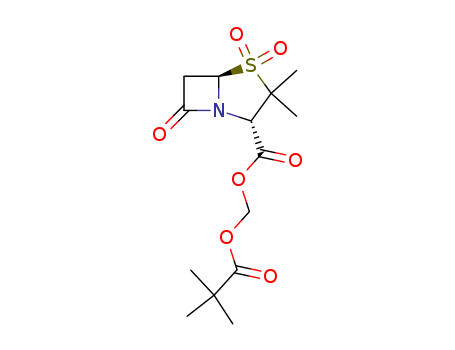- Product Details
Keywords
- Gemcitabine hydrochloride EP/USP
- CAS:122111-03-9 Gemcitabine hydrochloride
- 99% up Gemcitabine hydrochloride
Quick Details
- ProName: GEMCITABINE HYDROCHLORIDE CAS:122111-0...
- CasNo: 122111-03-9
- Appearance: white powder
- Application: An antineoplastic. Suitable for the tr...
- DeliveryTime: within 7-10 days after order
- PackAge: 1kg/tin or per customer's requirement
- Port: Beijing/Shanghai/Hangzhou/Shenzhen
- ProductionCapacity: 1000 Kilogram/Month
- Purity: 99%
- Transportation: room temperature
- LimitNum: 1 Kilogram
- Related Substances: Total impurities: not more than 0.2%
- Residue on Ignition: Not more than 0.1%
- Heavy Metal: Not more than 10ppm
- Valid Period: 2 years
Superiority
1) Specialized in pharmaceutical industry since from 1987
2) ISO 9001:2015 & SGS audited supplier
3) Accept better payment terms : T.T 30-60 days.on the basic of pass SINOSURE credit investigation.
5) We have warehouse in USA with quickly shipment .
6) We can do different terms of FOB ,CIF/CIP ,DDP ...
Details
|
Company Information |
Sinoway Industrial co., ltd. was established in 1987 in Xiamen, China, and now has been a leading group specialized in research, development, custom manufacturing and trading of pharmaceutical intermediates, APIs, health and food supplements, cosmetic raw materials, herbal extracts, polypeptides and prostaglandin derivatives, etc..
|
Product Description |
|
Product name |
Gemcitabine hydrochloride |
|
Molecular Formula |
C9H12ClF2N3O4 |
|
Molecular Weight |
299.66 |
|
CAS No. |
122111-03-9 |
|
Quality Standard |
EP / USP, medical grade |
|
Appearance |
White powder |
|
COA of Gemcitabine Hydrochloride |
Test |
Specification |
Result |
|
Characters |
White or almost white powder |
Conform |
|
Identification |
The IR spectrum of sample is concordant with the IR spectrum of Gemcitabine hydrochloride reference standard. |
Conform |
|
Chloride |
Conform |
|
|
Solubility |
Soluble in water; sparingly soluble in methanol, practically insoluble in alchohol and in polar organic solvents |
Conform |
|
pH |
2.0 to 3.0 |
2.2 |
|
Specific rotation |
+43° to +50° |
+49° |
|
Heavy metals |
Not more than 10ppm |
<10ppm |
|
Residue on ignition |
Not more than 0.1% |
0.06% |
|
Related substances |
Cytosine: not more than 0.1% |
0.02% |
|
α-anomer: not more than 0.1% |
Not detected |
|
|
Any other impurity: not more than 0.1% |
0.04% |
|
|
Total impurities: not more than 0.2% |
0.10% |
|
|
Bacterial endotoxins |
Not more than 0.05 EU/mg |
<0.05 EU/mg |
|
Not more than 100 CUFU/g |
<10 CFU/g |
|
|
Not more than 20 CFU/g |
<10 CFU/g |
|
|
Not detected |
Not detected |
|
|
Residual solvents |
Methanol: not more than 0.3% |
0.0001% |
|
Acetone: not more than 0.5% |
0.16% |
|
|
Isopropyl alcohol: not more than 0.5% |
Not detected |
|
|
Ethylene Dichloride: not more than 5ppm |
Not detected |
|
|
Assay |
97.5% to 101.5% ( on as-is basis) |
99.4% |
|
Conclusion |
Conforms to USP34. |
|
|
Usage |
Function of Gemcitabine hydrochloride
As a prodrug, gemcitabine hydrochloride is a good substrate for phosphorylation of deoxythymidine kinase in the cell and is converted into the following metabolites under the action of enzymes: gemcitabine monophosphate (dFdCMP), gemcitabine diphosphate (dFdCDP) and gemcitabine Phosphate (dFdCTP) dFdCDP and dFdCTP are active products. dFdCDP inhibits ribonucleotide reductase, thereby reducing the amount of deoxynucleotides required for repair of DNA synthesis (especially dCTP). Low levels of dCTP reverse the normal negative feedback inhibition of deoxyglycoside kinase, resulting in more dFdCTP Accumulation. At the same time, dFdCDP inhibits the deamination effect of dCTP-induced deoxycytidine on dFdCMP, and dFdCTP directly inhibits deoxycytidine deaminase, thereby converting more dFdCMP into the active metabolite dFdCMP deamination, and dFdCTP directly inhibits deoxygenation Cytidine deaminase, which converts more dFdCMP into the active metabolite dFdCDP, dFd-CTP and dFdCTP competes with dCTP for binding into the DNA strand, inserting it into the deoxycytidine site in the DNA strand, and allowing guanosine to interact with it After pairing, the gemcitabine molecule is "masked" by this guanosine to prevent it from being removed and repaired by exonuclease, and then DNA strand synthesis stops, and DNA breaks and the cell dies.


 Diamondsupplier
Diamondsupplier 




